We may earn revenue from the products available on this page and participate in affiliate programs. Learn more ›
Everybody wants to catch big bass. Visions of giant largemouths smashing topwaters and brute smallies peeling line are what keep us all up at night—and what get us out of bed at 4 am to be the first ones on the water. That’s all great. But none of it means you’re actually going to catch big bass.
There is a rhyme and a reason to catching big fish. As cliche or oversimplified as it may sound, but the simple fact is that you’ve got to fish for them to catch them, and a surprising number of anglers don’t.
To catch the big ones, you have to commit to targeting them. You have to have the right gear when the bites comes, and you can’t be scared to put the bait where the big ones live. But these are just some of the things you have to do land big bass on a regular basis. So, if you’re not catching as many monster largemouths, whopper smallies, or magnum spots as you’d like, here’s a breakdown of why—and how you can fix it.
Where I’m Coming From
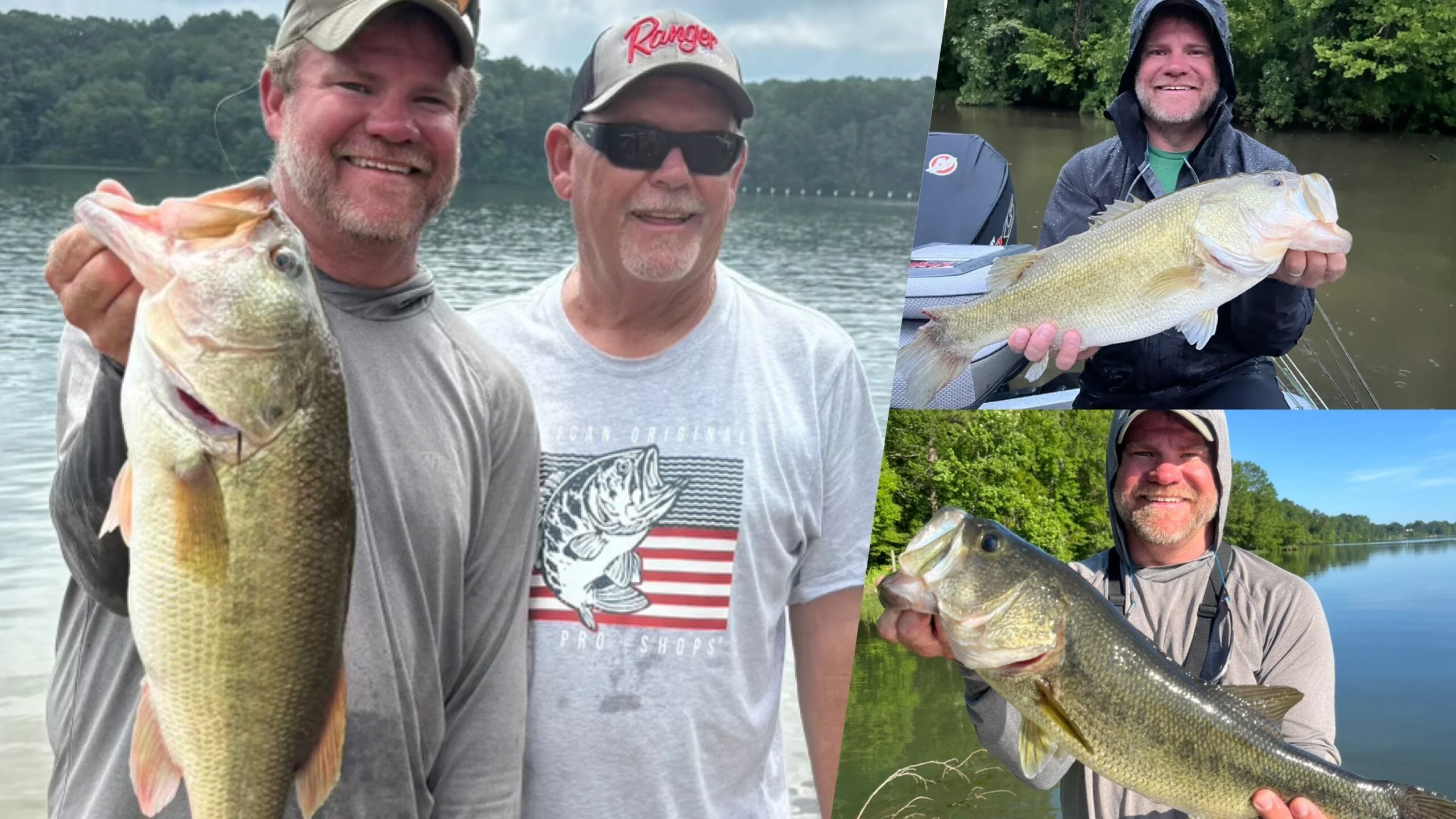
The author and his dad with just a few of the many big bass they’ve caught together. Shaye Baker
Now look, when my editors asked me the write “Why You Don’t Catch Big Bass,” I didn’t love the idea at first. It felt a little haughty, like I’m looking down on you for not catching the big ones on a regular basis. I assure you, I’m not. I agreed to write this so I can show you that catching big fish isn’t as hard as you may think. You might need to shake some bad habits, but beyond that, the key to landing big ones is simply setting out to do it.
I was fortunate enough to be born and raised with one thing on my mind every time dad and I hit the water—and that was catching big ones. We’ve never been the sort of anglers to go out and try to catch a limit first, then go looking for a big bite. To this day, we go out from the first cast with catching big ones as our main focus, trusting that a few keepers will come along as part of the process throughout the day. And more often than not, it pays off. But you have to commit to it.
So, that’s where we’ll start the conversation.
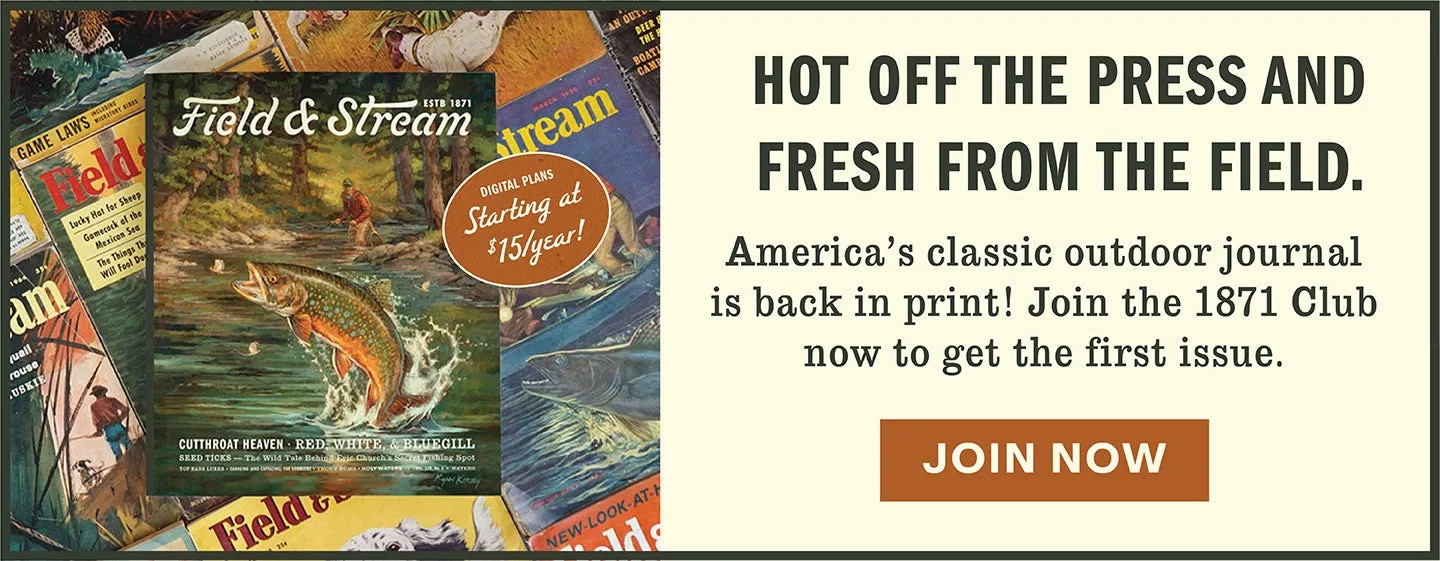
Learn how to get the all-new Field & Stream journal!
1. You Won’t Commit
When it comes to catching big fish, committing to it is probably 80 percent of the battle. The majority of bass fishing happens between the ears; it’s a mental game. Sure, your mechanics have to be on point, and we’ll talk more about that in a minute. But you can be as capable with a baitcaster as anyone on the planet, and still not catch big ones if you get rattled and spun out easily.
Every home run hitter is also great at striking out. Babe Ruth hit 714 home runs in his MLB career, and he struck out 1,330 times—nearly twice as much. If you’re afraid of striking out, you’re going to have a hard time swinging for the fence. Just go ahead and accept that some days aren’t going to be very fruitful when you commit to targeting big bass. But also know that each cast is a small investment that will eventually pay huge dividends, if you don’t give up.
What does this look like practically out on the water? It’s taking a buzzbait in the summer time, locking it in your hand, and staying shallow from the start of the day to the end. It’s picking up a flipping stick and punching mats for 5 hours without a bite, knowing that any flip could be a double-digit bass. It’s lobbing a big swimbait across point after point after point, forgoing the Ned rig that you could no doubt catch fish on in the same places, all for that one elusive bite that could be your new PB.
Once you commit to the big bite, you’ve won most of the battle. I can tell you firsthand that last-minute heroics have often converted long, tough days into fantastic memories. A recent catch comes to mind. Dad and I were fishing a tournament on our local lake in summer. I’d been throwing either a frog or a buzzbait for 5-1/2 hours. Dad had been throwing big fish baits too. We had very little to show for it—five fish for about 5 pounds. Then suddenly, with half an hour to go in the day and a 10 minute boat ride still ahead, a 5-pound, 10-ounce meathead erupted on my buzzbait. And with one cast, our weight was doubled, and we rolled out of there with the big fish for the day and a little pocket change. It took committing though. And it paid off.
2. You Can’t Make the Cast
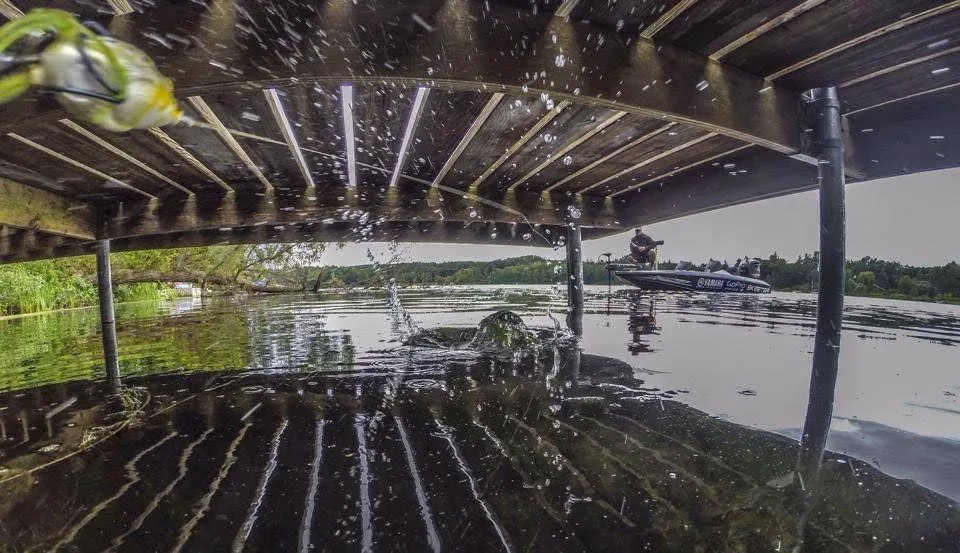
With enough practice, even skipping a bait perfectly under a dock becomes routine. Shaye Baker
The next big thing with catching big bass is making accurate casts. This is all about efficiency. The better you are at casting, the more good casts you can make in a day, the more you stack the odds in your favor of eventually catching a big fish. So whether you’re looking at a dot on your forward facing sonar that’s 33 feet in front of the boat and 17 feet deep, or you’re trying to sneak your skipping jig between a pontoon and a motor, being able to make an accurate cast is a big part of the puzzle.
So, how do you make those casts? Practice. It’s the only way. You have to put the time in. You can get out in the yard with a flipping jig and a paint bucket and get pretty good at pitching a jig. But, at the end of the day, nothing equates to time on the water.
You’ll want to diversify your skillset as well. You’ll need to learn to skip, pitch, lob, backhand, and roll-cast baits of all shapes and sizes. One of the best ways to get started with this though is to pick a bait and get good with it. Take a 3/8-ounce skipping jig and put it on a 7-foot medium-heavy rod with 17-pound fluorocarbon and get intimate with that exact setup. Don’t change things up. Let that be the rod, reel, line, and bait that you pickup every time you come up to a dock, week after week, and you’ll find that you get pretty good at skipping a bait fairly quick.
Related: How to Skip Bass Lures
3. You’re Scared of Getting Snagged
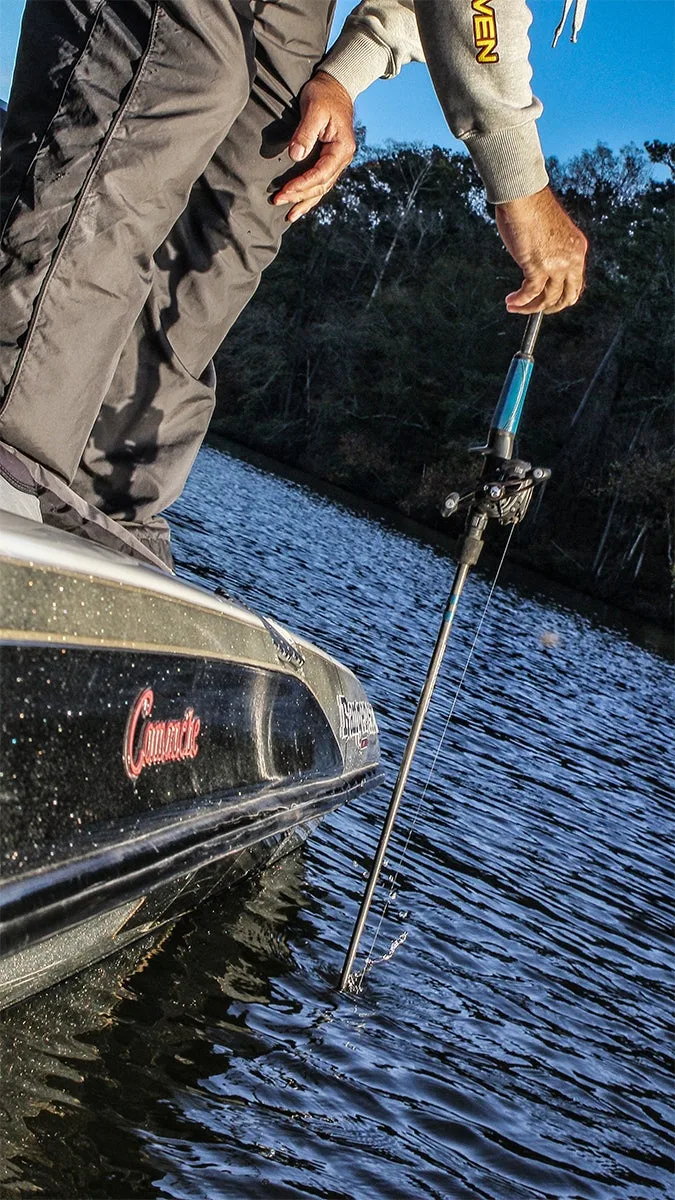
If you’re not getting hung up now and then, you’re not getting your lure where the fish are. Shaye Baker
You can’t worry about getting hung if you want to catch big fish with any kind of regularity. Bass love cover. Big bass really love cover. My dad puts it this way, “If you’re not getting hung every once in a while, you’re not throwing where the fish are.” If you get hung, just go get your bait. And don’t be scared of making a bad cast either. Don’t worry about the embarrassment that comes with an errant cast dinging a pontoon boat—even if it does sound like a monk ringing a gong in the Himalayas.
Making a bad cast or getting hung every now and then is just part of the process of pursuing big bass. I tell newcomers to the sport all the time, I’ve been picking out backlashes and getting unhung a lot longer than I’ve been catching fish. Each little mistake is just another deposit in the “getting better” fund. And, if you make enough deposits, you’ll eventually bust up a big one.
4. You Don’t Have the Right Gear
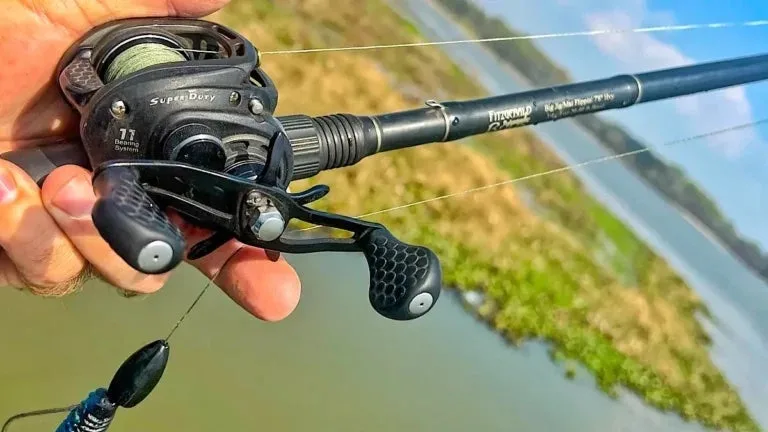
Having the right gear for every situation may take an investment, but it will help you catch bigger fish. Shaye Baker
Another of dad’s sayings: “You don’t go bear hunting with a switch.” In other words, your gear needs to be tailored to the big fish you’re targeting. If you’re going to punch mats, you don’t want a 7-foot medium-heavy rod and 15-pound fluorocarbon. Nope, you’re going to need a 7-foot, 8-inch heavy flipping stick with 65-pound braid.
But picking the right gear for targeting big bass doesn’t simply come down to brute strength. The best gear for drop shotting for giant smallmouth is actually very delicate, often requiring a sub-7-foot rod and a spinning reel, spooled with 10- to 15-pound braid and an 8- or 10-pound fluorocarbon leader. In this situation, the right gear for targeting big smallmouth has more to do with efficiency and effectiveness than sheer strength. Since the water is clear and smallmouth can see really well, you need a small-diameter line. And spinning reels drop baits vertically way better than baitcasters.
Another example: You don’t want to use fluorocarbon with topwaters baits, since fluoro sinks and makes it hard for you to work the baits or keep them on top. And you don’t want to use braid or monofilament with deep crankbaits, since those lines float and will prevent the crankbait from getting as deep.
Again, I can’t stress enough the importance of efficiency when it comes to targeting big bass. Big bites are usually few and far between. So, ensuring you have the right gear to make as many accurate and effective casts as possible is essential. And then having the confidence in that gear to get the fish into the boat is key too.
5. You Don’t Know Where to Look
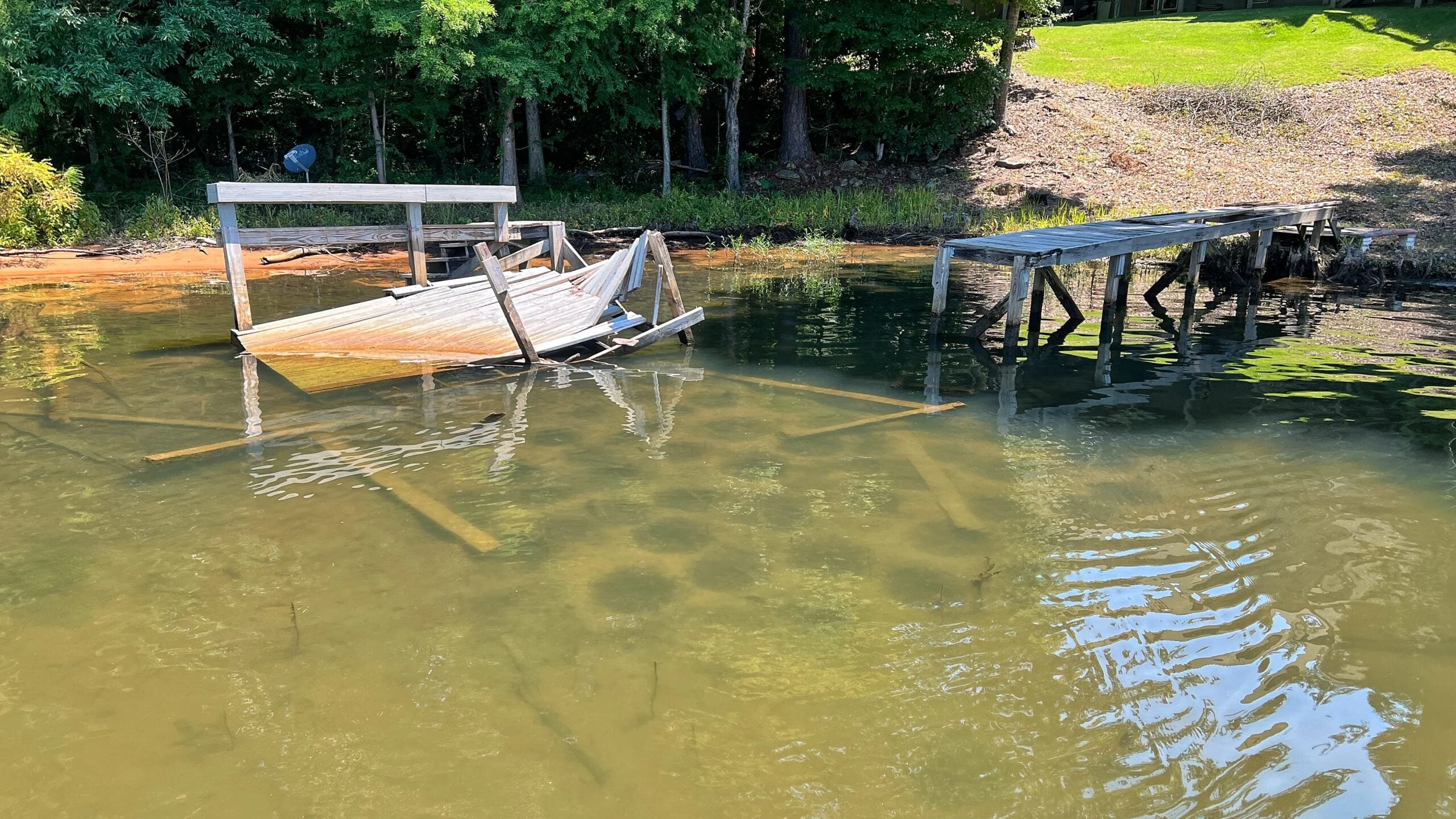
Big bass will prowl bluegill beds in summer. Shaye Baker
Knowing where to look is a crucial part of catching big bass on a regular basis. And a lot of this comes down to research. There is so much information on the internet now. Decades of experience are condensed into digestible 5-minute videos and how-to articles that can teach you how to target bass of all kinds in all situations. You can Google “Where do bass spawn?” or “Best spots to target pre-spawn bass,” and in a millisecond, all you’ll ever need to know on the subject is right in front of you.
But knowing and doing are two different things.
You have to do the research. You have to learn where to look. But then you have to take what you learn and put it to the test in the real world. Big bass love to target bream in the summer.
Bluegill like to spawn in little cuts and pockets. But, they won’t spawn in every little cut or pocket. There may be a hundred nooks, crannies, and cuts in just one section of the lake, and the bluegill only spawn in 10 of them. You need to go hit every one to learn where the big bass hold.
Related: How to Target Bass Around Bream Beds
6. You’re Don’t Put the Time In
Nothing can take the place of time on the water. Catching big bass is partly a numbers game. I said before that the more accurate casts you can make in a day, the better your chances. Well, the same goes for number of days and hours on the water.
More time means more opportunities to catch a giant. But also, you need that time to gain experience and critical knowing. Back to the spawning bluegill example: These fish don’t spawn every day of the summer either. So, you may go out on the lake and fish cuts and pockets all day and never see a single bream on bed. But, that doesn’t necessarily mean you were looking in the wrong places. It could just be that you were looking at the wrong time.
Keep at it and with time, you’ll find out that bluegill spawn better on a full moon, and they tend to be more active in low light. Eventually, you’ll dial in both time and place and start catching big fish there. It takes research and time on the water to get better at knowing when and where to look for big bass.
7. You Don’t Go the Extra Mile
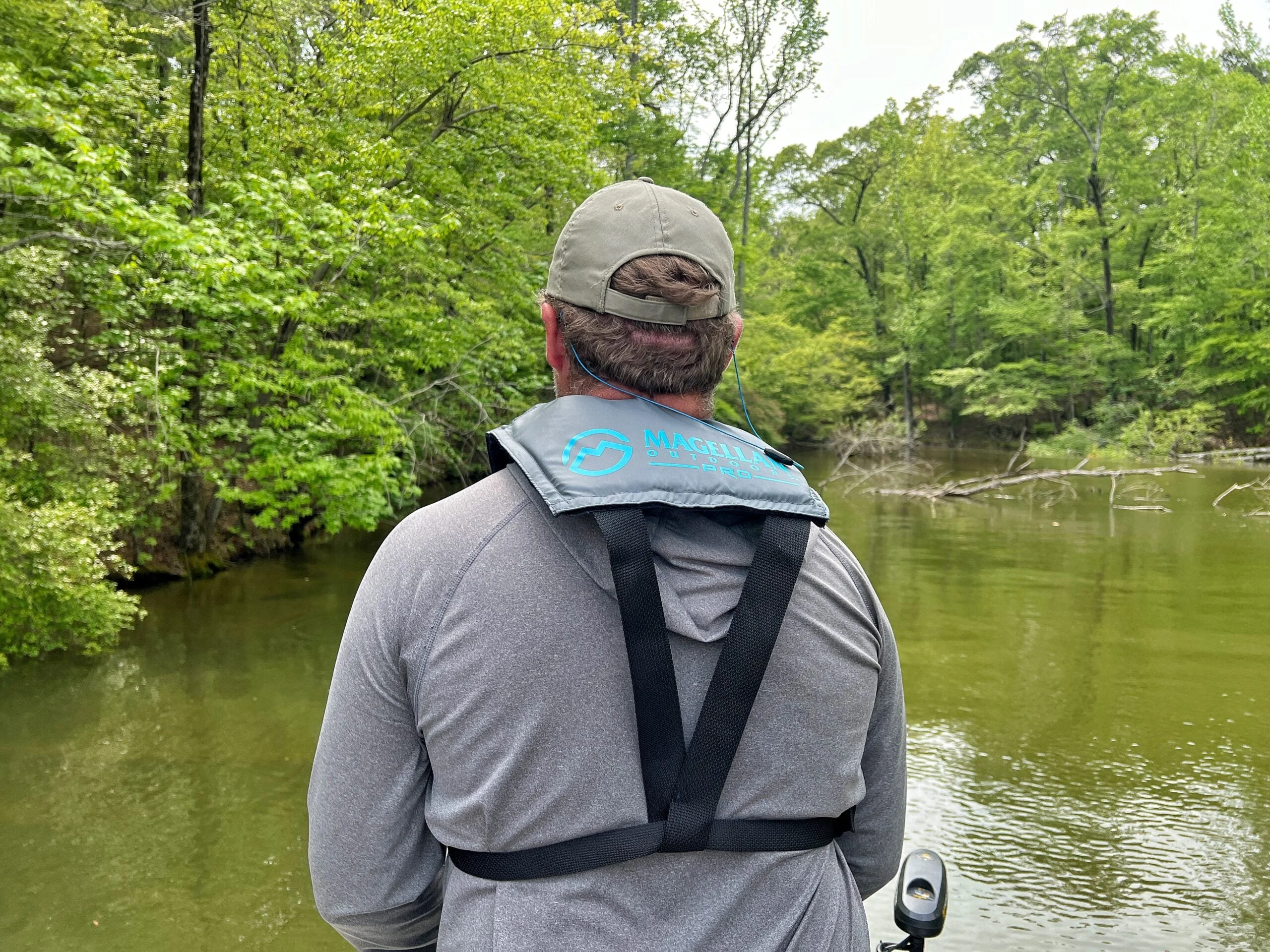
Do what you have to in order to reach those hidden honey-holes where the biggest bass lurk. Shaye Baker
Big bass do not like to be bothered, especially big largemouths. They’ll often venture to the farthest reaches they can access, at least in part, I assume, to get away from fishing pressure. And big spots and smallmouth are prone to seek out the far stretches of a fishery too, especially any time there’s current present, like in a river or beneath a dam. It’s important to explore these sanctuaries, even if it takes a little extra time and work to do so. Take your pedestal seat down and lay on your back to slide your boat beneath a culvert or a walkway. Get smacked in the face by a few limbs to get way back in a ditch. Weave in and out of boulders (carefully and with a PFD on) to make a cast right to an inflow beneath a dam.
Picking your trolling motor up halfway out of the water and skimming your way back into a backwater is something 90% of bass anglers won’t fool with. Which means you can gain access to fish that are far less pressured, if you’re willing to put in a little work. (Again, safely.) You may even have to get out and push the boat to leave an area if the water falls, but if there’s a 6-pounder in the livewell because you were willing to go the extra mile, you’ll be happy you did.
In the end, there’s an art to catching big fish, sure, but it’s not as hard as many people believe. If you’re willing to commit to the big bite, put in the work, study, learn, not be afraid to fail and, again commit, you can catch big bass on a fairly regular basis. You will have tough days on the water. You won’t always catch big ones, and when you don’t, you likely won’t catch much of anything at all.
As I write this, it’s the dead of summer here in Alabama. In my last eight fishing trips, I’ve caught an average of around four fish per day beating the banks. But the best five-fish limit across those days would push 27 pounds. I’ve caught a 6-1/2, a 5-1/2, and a 4-1/2 pounder in tournaments, and another 6 and 4-1/2 just fishing for fun. And you can throw in a couple more 3 to 4 pounders in the mix, plus a couple around that size that I lost. So, I can tell you first hand, that while you may not catch a lot of fish targeting big ones, the ones you do catch will make it all worthwhile.


